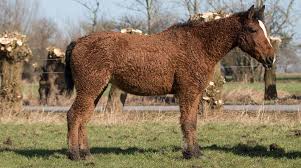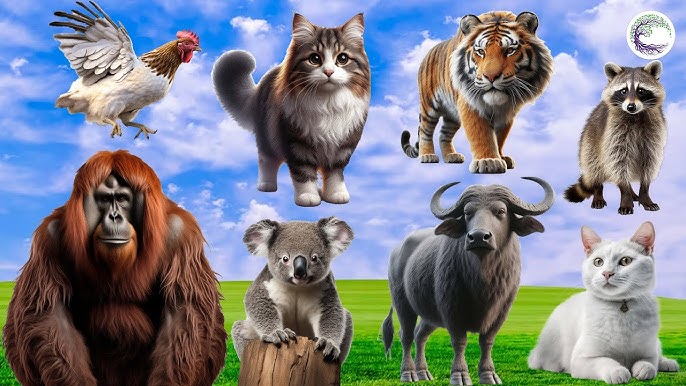
Bashkir
Conditions of detention
Bashkir horses are incredibly hardy and can live outdoors year-round, even in extremely cold climates. They do well in environments with minimal shelter, as their thick winter coat provides excellent insulation against the cold. However, access to basic shelter is beneficial during extreme weather.
Useful Fact: Bashkir horses are particularly well-suited to living in harsh climates, where they can thrive on sparse vegetation and withstand temperatures that would be challenging for other breeds.
Nutrition and diet
The Bashkir horse can maintain good health on a simple diet of natural forage, including grasses and hay. Due to their origins in a region where food can be scarce, they have an efficient metabolism that allows them to thrive on minimal feed.
Useful Fact: Bashkir horses are often able to maintain their weight and health on forage alone, making them low-maintenance in terms of diet compared to other breeds that may require more intensive feeding regimens.
Health
Bashkir horses are known for their strong constitution and general resistance to disease. They rarely suffer from the common ailments that affect other breeds, thanks to their hardy nature and centuries of adaptation to tough environments. Regular veterinary care, including vaccinations and dental care, is still necessary to maintain their health.
Useful Fact: The breed’s natural hardiness means that Bashkir horses often have fewer health problems and longer lifespans compared to more refined breeds.
Grooming and care
Bashkir horses grow a thick, woolly coat during the winter, which sheds in the spring. Regular grooming is important, especially during the shedding season, to prevent matting and to maintain skin health. Their hooves are strong and typically require less frequent trimming, although regular checks are still necessary.
Useful Fact: The Bashkir horse’s winter coat can even be harvested and used to make felt or other textiles, making them unique among horse breeds for this additional utility.
Education and training
Bashkir horses are intelligent and adaptable, making them relatively easy to train. They are typically calm and cooperative, which suits them well for a variety of tasks, from light farm work to riding. Due to their calm demeanor, they are often used in equestrian tourism and therapeutic riding.
Useful Fact: Bashkir horses, with their calm temperament and strong work ethic, are particularly well-suited for training in environments that require patience and persistence.
Toys and entertainment
Bashkir horses benefit from physical activity and mental stimulation. While they are often kept in extensive, free-range environments where they can graze and explore, they also enjoy activities that challenge their intellect and curiosity, such as trail rides or interactive toys like treat dispensers.
Useful Fact: Engaging Bashkir horses in activities that mimic their natural environment, like long-distance trail rides, helps keep them mentally and physically fit
Safety
Given their calm and sturdy nature, Bashkir horses are generally safe to handle and work with. However, as with any horse, ensuring secure fencing and a safe environment is crucial to prevent accidents. Their natural sure-footedness makes them particularly safe on rough terrain.
Useful Fact: The Bashkir’s strong and stable build, combined with its calm demeanor, makes it less likely to panic or injure itself in challenging situations, contributing to overall safety.
Accessories
Bashkir horses require standard tack, but it should be well-fitted to accommodate their unique conformation, which is often stockier than that of more refined breeds. Given their strength and endurance, durable tack is recommended, especially if the horse is used for work or long rides.
Useful Fact: Due to their broad backs and strong necks, finding appropriately fitted tack is important for Bashkir horses to ensure comfort and prevent injuries during work.
Socialization
Bashkir horses are social animals and thrive on interaction with both humans and other horses. They do well in herd environments and are known for their friendly, cooperative nature. Regular socialization is important for their mental well-being.
Useful Fact: The Bashkir horse’s friendly disposition makes it well-suited to living in a community setting, where it can interact with other horses and humans regularly.
Travel and Transportation
Bashkir horses generally handle travel well, but like all horses, they require a comfortable, well-ventilated trailer. Their calm nature makes them easier to load and transport, though ensuring they are accustomed to the process is still important.
Useful Fact: Bashkir horses’ resilience and calm nature often make them more tolerant of long-distance travel than more high-strung breeds, reducing the stress associated with transportation.
Behavior and psychology
Bashkir horses are known for their calm, intelligent, and patient nature. They are well-suited to a variety of roles, from farm work to riding, and are highly adaptable. Their temperament makes them particularly good for beginner riders and for use in therapeutic settings.
Useful Fact: The breed’s history of close interaction with humans has made Bashkir horses particularly sensitive to human emotions and behaviors, often making them excellent companions in both work and leisure.
Legal aspects
Owning a Bashkir horse may involve specific legal considerations, especially if they are used in breeding or competition. In Russia, and increasingly in other parts of the world, efforts are being made to preserve the breed, and registering these horses with appropriate breed organizations can help ensure their lineage and contribute to conservation efforts.
Useful Fact: Bashkir horses are sometimes registered with breed-specific organizations that work to preserve their unique characteristics and promote their use in traditional and modern settings.


